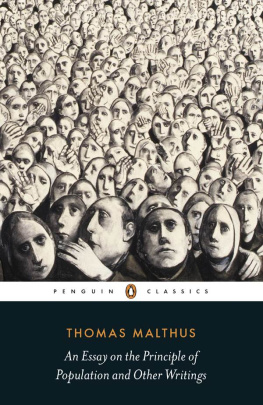THE MEASURE OF VALUE.
It is generally allowed that the word value, in common language, has two different meanings; one, value in use, the other, value in exchange; the first expressing merely the usefulness of an object in supplying the most important wants of mankind, without reference to its power of commanding other objects in exchange; and the second expressing the power of commanding other objects in exchange, without reference to its usefulness in supplying the most important wants of mankind.
It is obviously value in the last sense, not the first, with which the science of Political Economy is mainly concerned.
But the power of one object to command another in exchange, or in other words the power of purchasing, may obviously arise either from causes affecting the object itself, or the commodities against which it is exchanged.
In the one case, the value of the object itself may properly be said to be affected; in the other, only the value of the commodities which it purchases; and if we could suppose any object always to remain of the same value, the comparison of other commodities with this one would clearly show, which had risen, which had fallen, and which had remained the same. The value of any commodity estimated in a measure of this kind might with propriety be called its absolute or natural value; while the value of a commodity estimated in others which were liable to variation, whether they were one or many, could only be considered as its nominal or relative value, that is, its value in relation to any particular commodity, or to commodities in general.
That a correct measure of the power of purchasing generally, or of commanding such important commodities as the necessaries and conveniences of life, in whatever way such power might arise, would be very desirable, cannot for a moment be doubted, as it would at once enable us to form a just estimate and comparison of wages, salaries, and revenues, in all countries, and at all periods. But when we consider what such a measure implies, we must feel certain that no one object exists, or can be supposed to exist, with such qualities as would fit it to become a standard measure of this kind. It would imply steadiness of value, not merely in one object, but in a great number, which is contrary to all theory and experience.
Whether there is any object, which, though it cannot measure the power of purchasing generally under the varying facilities of production and varying state of the demand and supply by which different commodities are affected, may be a correct measure of absolute and natural value as above described, is the specific object of the present inquiry.
It follows directly, from the principles of Adam Smith, that the conditions of the supply of the great mass of commodities are, that the returns should be sufficient to pay the wages, profits and rents necessary to their production. If these payments be made in money at the ordinary rates of the time, they form what Adam Smith calls their natural prices. Money however we know is variable. But if for money we substitute the objects necessary to give the producer the same power of production and accumulation as the natural money prices would have commanded, such returns maybe considered as the natural conditions of the supply of commodities, and may with propriety be denominated their natural value, in contradistinction to their natural price.
Of these three conditions of supply, or elements of natural value, the two first are obviously the most important. They are not only the sole conditions of supply in those early stages of society before the appropriation of land has taken place, but they continue to be so in reference to large classes of objects in the most advanced stages of improvement; and it is now generally acknowledged that even the main vegetable food of an improving country, which is the foundation of wages, must necessarily be of the same value as that part of the produce which is almost exclusively resolvable into wages and profits, and pays very little rent.
We cannot therefore essentially err in assuming for the present that the natural value of objects in their more simple forms is composed of labour and profits, and the effect of any portion of rent, or of other ingredients which are sometimes added to these elements, may be allowed for subsequently.
We may also consider as a postulate which will be readily granted, that any given quantity of labour must be of the same value as the wages which command it, or for which it actually exchanges.
Of the two main elements of value, labour and profits, the former, particularly if we include, as we ought to do, accumulated as well as immediate labour, is much the largest and most powerful.
The great instrument of production is labour. There is no commodity nor implement used to assist manual exertions in which it does not enter as a condition of supply, and very few in which it does not enter very largely. If in the production of commodities and of the implements which assist in this production, no other ingredient were required than labour, and the interval between the exertion of the labour and its remuneration in the completed commodity were so inconsiderable that it might be entirely disregarded, it is certain that, as the same quantity of labour would have a constant tendency to produce commodities in the same relative proportion to each other, and to the demand for them, they would be found on an average to exchange with each other according to the quantity of labour which had been employed to obtain them.
Thus if ten mackerel were, on an average, obtained by the same quantity of labour as two soals, it would be necessary, in order to continue the supply of both in the market, that the value of a soal should be five times as great in the power of purchasing similar commodities, as the value of a mackerel; because if it were less, none would apply themselves to the catching of soals; and though it is quite certain that at any given period the relative value of soals and mackerel would be exclusively determined by the state of the demand and supply of each; and that they would, in consequence, often vary very considerably; yet it is as certain, that on the supposition of the hypothesis being correct, and that they both continued to be brought to market, each would on an average be supplied in such a quantity, compared with the demand for it, that a soal would ordinarily exchange for five mackerel, and the different quantities of labour required to produce them would, in this case, be a correct measure both of their natural and relative value in exchange.
Now supposing that the skill and power of the labourers were so to increase, that, in the same time and with the same personal exertions, they could obtain three soals and fifteen mackerel, it is obvious that the relative value of soals to mackerel would remain the same, but they would both have essentially altered their value compared with all those commodities which still required the same quantity of labour to produce the same supply of them. With regard to such commodities, soals and mackerel would have become of less value, and consequently they would have become of less value with regard to a given quantity of labour. The correct language in this case would be, not that labour had become dearer, but that soals and mackerel had become cheaper. And if the same increase of skill and power could be conceived to extend to all other commodities, and all commodities were similarly circumstanced as to their mode of production and bringing to market; it cannot be doubted, that though they might retain the same relative value compared with each other, they would all become more plentiful with regard to the wants of the society, and any given quantity of labour. And the correct language would still be, not that labour had become dearer, but that all commodities had become cheaper. This fall would be a fall in the absolute and natural value of commodities; and as long as labour alone was concerned in their production, and they were brought to market immediately, it would be allowed that the different quantities of labour employed upon them would be a correct measure both of their relative value compared with each other, and of their absolute and natural value in reference to the conditions of their supply. Their natural values would be exactly represented by the different quantities of labour worked up in them; while their natural prices would be these different quantities of labour estimated in money, according to the money price of the labour employed.







